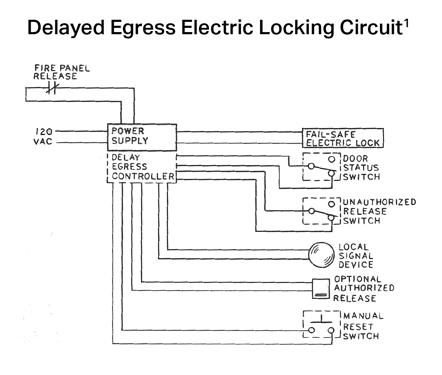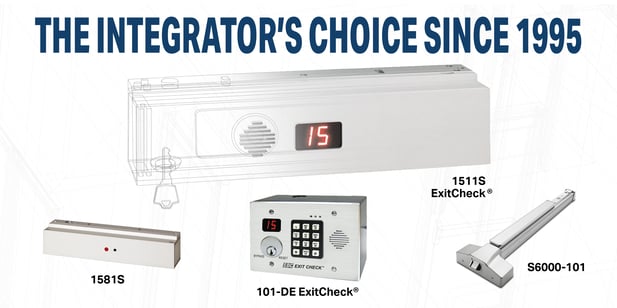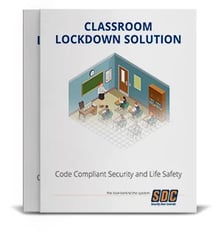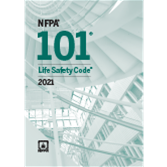This post is the second in a series to address concerns expressed on our social media platforms regarding Delayed Egress Systems that indicated misconceptions about their proper application in Security, and Fire and Life Safety applications.
Addressing Misconceptions
One of the more common misconceptions we’ve encountered about Delayed Egress Systems is that exit from a building is delayed during an emergency – think smoke or fire detection - endangering lives. As the basic electric locking circuit wiring diagram shows[1], delayed egress is first and foremost a fail-safe electric locking system. In response to the change in the NFPA 101 – Life Safety Code in 1981, allowing for a 15 second delayed release of a failsafe locking device, security can be provided at a perimeter exit door using a Delayed Egress lock while still providing for Fire and Life Safety.

[1] From “Electronic Locking Systems” by John L. Schum: Considered to be the Industry Bible for Electronic-Electric Locks - https://www.amazon.com/Electronic-Locking-Devices-Security-Technicians/dp/0409901253
This means that if power to the system is ever lost for whatever reason, the fail-safe electric lock will release immediately, allowing for egress without delay in an emergency. The diagram also shows the system as being connected to the fire panel release of an alarm system, again providing for uninhibited egress in an emergency. Further, if a fire actually occurs in the alarm, power supply or controller systems causing failure, the fail-safe lock will also release.
Addressing Misapplications
As far as an active shooter is concerned, Delayed Egress Systems were not designed for application in these situations. Rather, there are numerous Lockdown solutions developed to keep occupants safe from outside intruders while still providing for their egress and also outside access by administration, management and first responders. See our Classroom Lockdown page for examples of code compliant, flexible access & lockdown controls devised to provide security in active shooter situations: www.sdcsecurity.com/lockdown.
Should an owner or facility manager have concern about an active shooter situation within a building secured with a Delayed Egress System on a perimeter door, an optional legal release may be included for immediate release of the lock by authorized personnel using the “OPTIONAL AUTHORIZED RELEASE” input as noted in the above wiring diagram.
Misapplications of Delayed Egress Systems can occur – like overriding the release function with a motion sensor or switching off the release function with an after-hours switch - in ways too numerous to detail.
Proper Applications Must Comply With Codes
In all cases, proper application of a Delayed Egress System must comply with all national and regional building and fire life safety codes and the NFPA 101 section on Special Locking Arrangements.” For details and restrictions that apply when using Delayed Egress locks, visit NFPA 101 at: http://bit.ly/3LYUXwP and also consult with your local AHJ (Authority Having Jurisdiction) for their specific code requirements regarding the application of Delayed Egress Systems.
Remember the Objective
Delayed Egress Systems let facility management secure perimeter doors during normal business hours to prevent theft – like warehouse back doors, and to ensure public safety – like jetway & tarmac doors at airports, while still allowing for egress in the event of an emergency. They provide theft protection of merchandise, technology and other valuables such as art and museum artifacts in stores, art galleries, museums and technology facilities. Delayed Egress locks also restrict movement of wandering patients in senior assisted living, psychiatric, and drug rehab facilities and guard against infant abduction in hospital nurseries.
Delayed Egress Systems like ours (and others) reduce an occupant’s stress by communicating the door status verbally and visually in an emergency while maintaining safety and security needs.
Check back soon as Part 3 will address specific examples of Delayed Egress Locking System applications.
Resources
For a deep dive into Delayed Egress Code Applications and products, visit Lori Greene's industry blog, iDigHardware.com and search for Delayed Egress.
And, visit our own Delayed Egress Innovation page at: www.sdcsec.com/delayedegress




